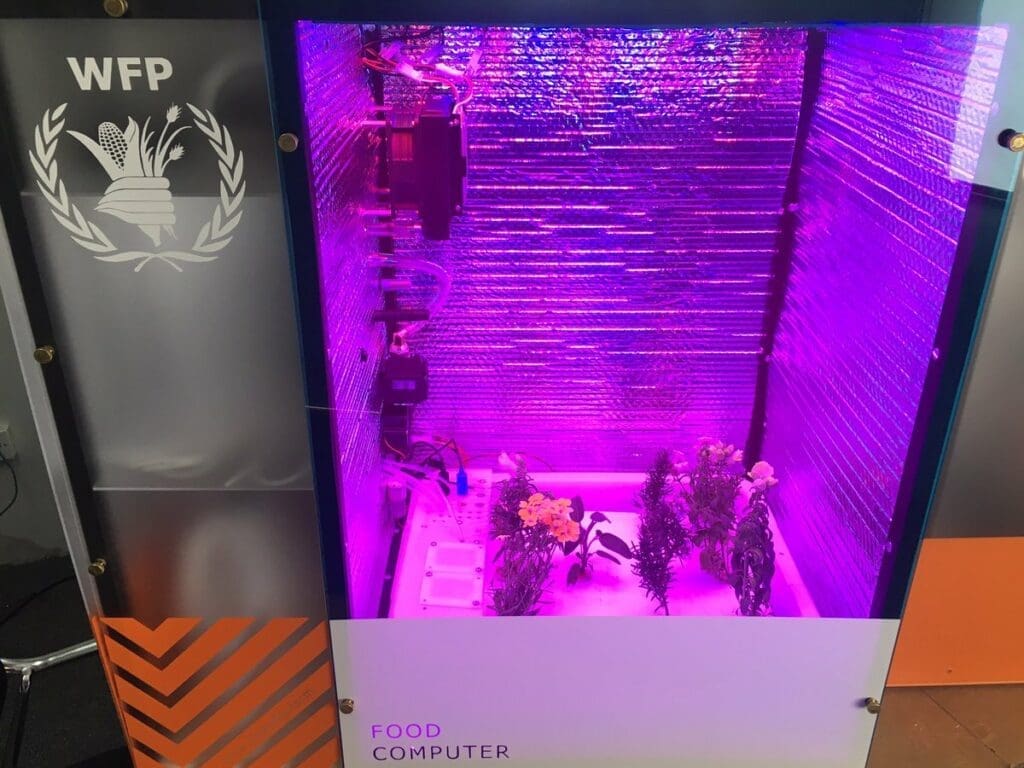
10 Innovations Changing How The U.N. Delivers Food
As technology adapts and smarter solutions emerge, WFP is testing and deploying bold new tools to carry out its global, lifesaving mission of delivering food to families in need.
From growing fresh food without soil to using drone technology to map areas affected by natural disaster, these groundbreaking approaches are transforming how the world’s leading hunger-fighting agency feeds people across the globe.
Below are 10 innovations that are changing the way WFP works:
1. Airtight Silos in Uganda
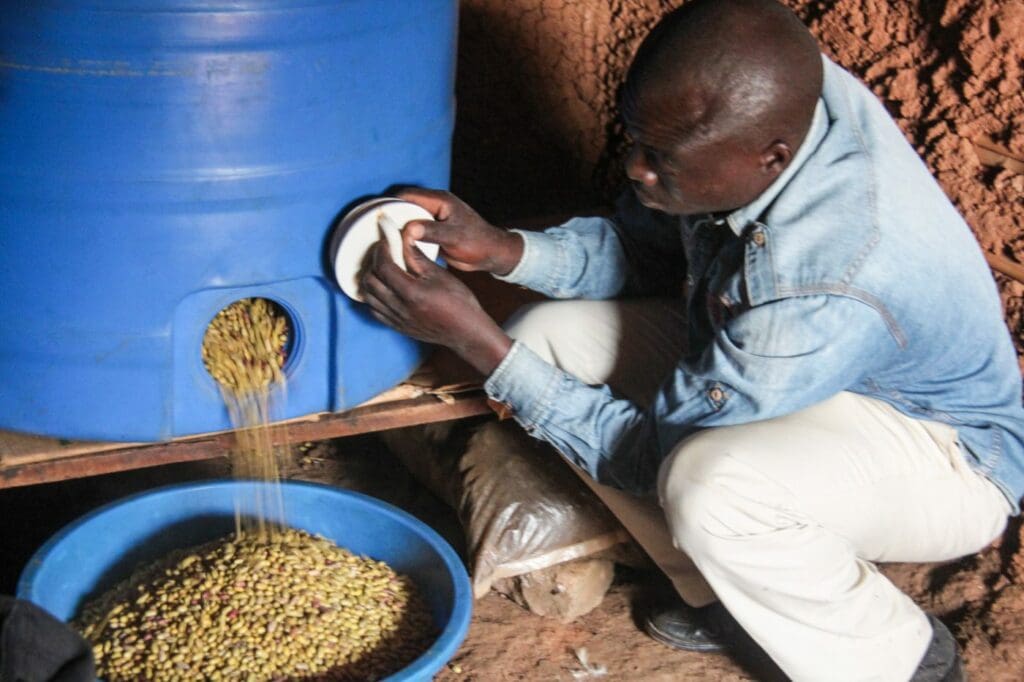
A farmer in Uganda uses a plastic silo to store his corn, which reduces the risk of contamination from pests and mold and significantly extends his harvests’ shelf life.
The world collectively wastes one-third of all the food grown each year. In developing countries, most of this food waste happens before it even reaches the plate. In sub-Saharan Africa, for example, smallholder farmers can expect to lose nearly half of their harvest before it even leaves the farm. That’s because many of these farmers lack proper storage to prevent bugs and mold from infesting their harvests. And this mold can actually lead to cancer—a major health issue in low-income nations.
The solution? Airtight storage made out of repurposed plastic. Think of it as tupperware for crops. In Uganda, WFP is pioneering a project with support from the U.S. Agency for International Development (USAID) and researchers from MIT in which the agency sells plastic silos to smallholder farmers. The early results have been astounding: These silos have resulted in a 84% drop in “post-harvest loss,” as this food waste on the farm is often called. Farmers have more crops to sell and they can store their crops longer, which means they don’t have to sell immediately after harvest when these crops fetch lower prices.
2. Virtual Farmers Market in Zambia
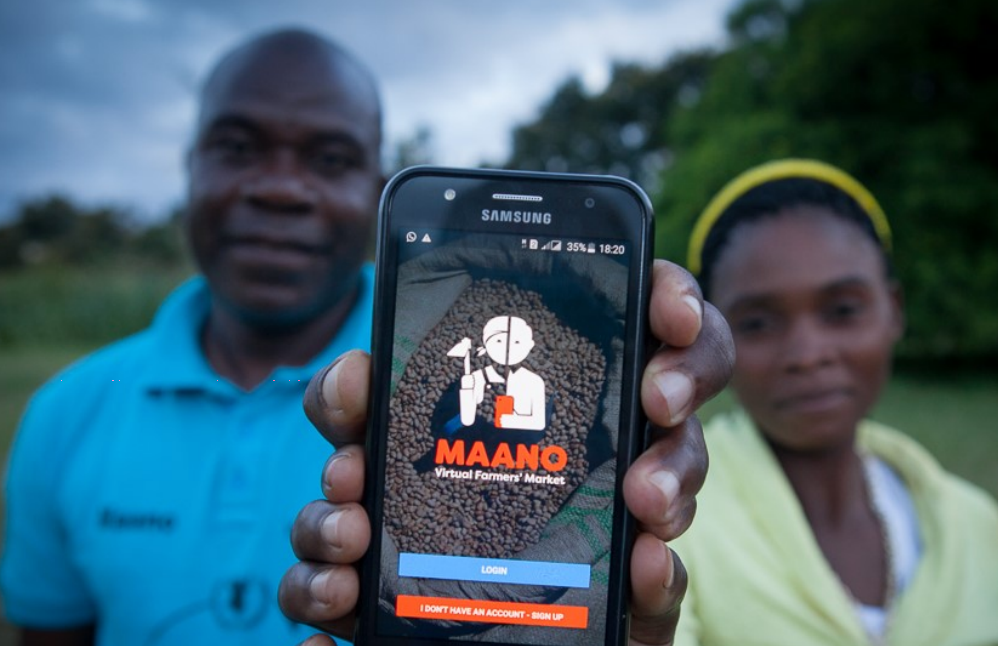
A couple in Zambia hold up a smartphone showing the interface for a free new app called “Manoo.” Developed by WFP, this virtual farmers’ market connects buyers and sellers in the country’s agricultural sector, making it easier for farmers in remote areas to access markets and information, like food prices.
More than half of the world’s hungry are smallholder farmers, most of whom live in remote, rural areas where access to buyers for their crops is scarce. At the same time, lower smartphone prices are driving a digital revolution in Africa, where many of these smallholder farmers live.
Enter WFP’s “Virtual Farmers Market,” an e-commerce platform that connects farmers and buyers in rural Zambia, enabling them to negotiate prices and make transactions through a smartphone app. This approach makes rural, smallholder farmers more visible to new buyers while reducing transaction costs for both buyers and farmers, thereby increasing the profitability and scale of trade for both sides. This new app—known as “Maano” in Zambia, which means “intelligence” in Tonga—targeted 2,500 farmers when it launched last summer. The first transaction—a sale of 40 bags of cowpeas—occurred in June 2017. Over the next four years, WFP will continue testing this app while seeking new investors to scale up.
3. Drones During Disasters
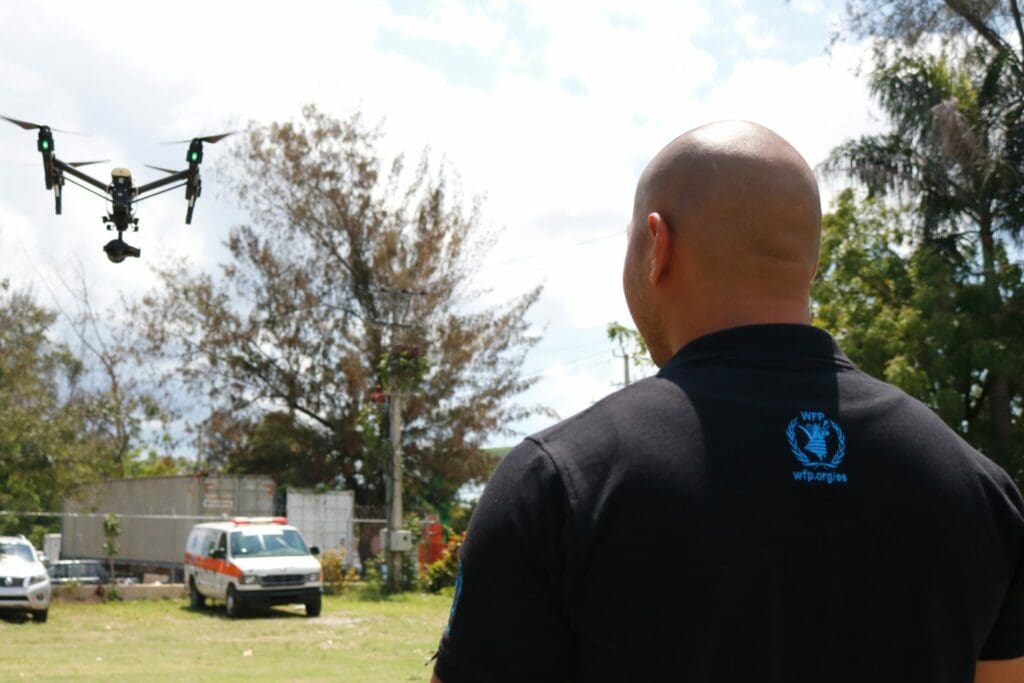
A WFP staffer in the Dominican Republic maneuvers a drone during one of four workshops conducted last year in disaster-prone countries.
As one of the first humanitarian organizations to explore the use of unmanned aerial vehicles or UAV for short, WFP first began experimenting with this new technology back in 2007. Now the agency is working to professionalize drone coordination throughout the humanitarian sector.
Last year the agency conducted workshops and drone simulations in four disaster-prone countries—Mozambique, Myanmar, Peru and the Dominican Republic—to help create a roadmap for safe humanitarian drone deployment. The workshops addressed guidelines on privacy, perception, data protection and how to integrate this new technology with existing satellite imagery mapping.
“When disaster strikes, the humanitarian community’s ability to mount an immediate and effective response is often the difference between life and death,’’ said Karin Manente, Country Director in Mozambique. “Use of UAV technology will go a long way to provide more reliable and precise intelligence for real-time, life-saving decision making.”
Learn more about WFP’s humanitarian relief programs.
4. Urban Agriculture in Peru
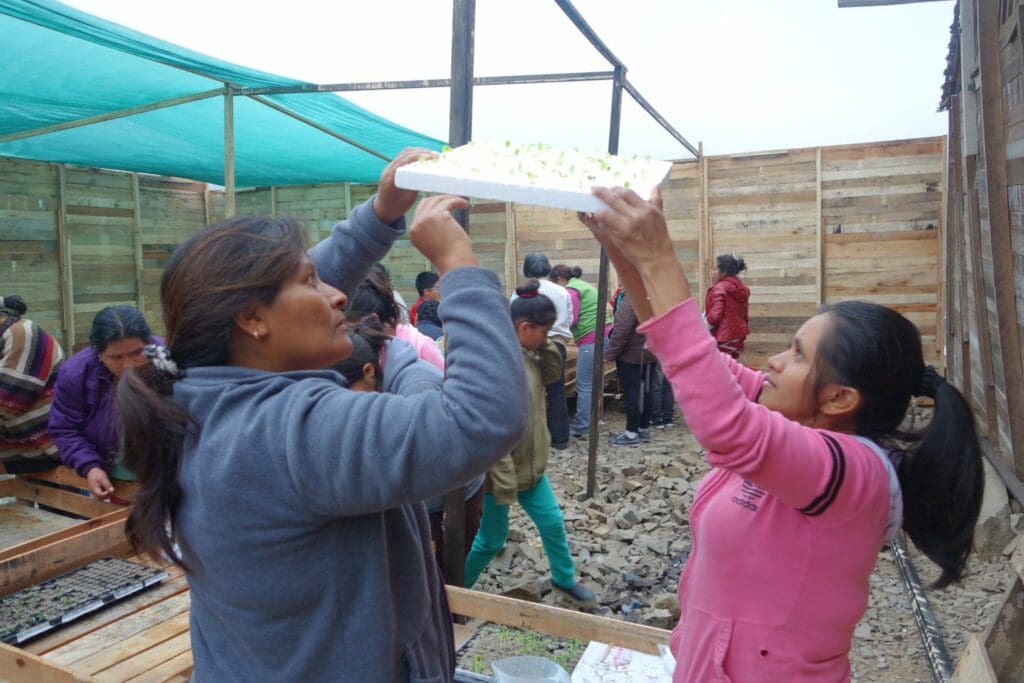
Women in Peru examine their seedlings as part of WFP’s effort to bring hydroponic technology to vulnerable households in the slums of Lima.
In the slums of Lima, Peru, WFP is equipping vulnerable households with the knowledge and tools to grow nutritious food while establishing the foundation for local, women-run businesses. Like the “food computers” project in Jordan, this initiative utilizes hydroponic cultivation to grow food in non-fertile places. But unlike the vast desert of Jordan, this approach assists families in urban areas with limited access to space.
The pilot, which is currently supporting 200 women across three districts in Lima, focuses on creating business opportunities, especially for communal orchards. The project not only promotes hydroponic technology, it also expands access to fresh, nutritious fruits and vegetables for the wider community.
5. Self-Driving Trucks in East Africa
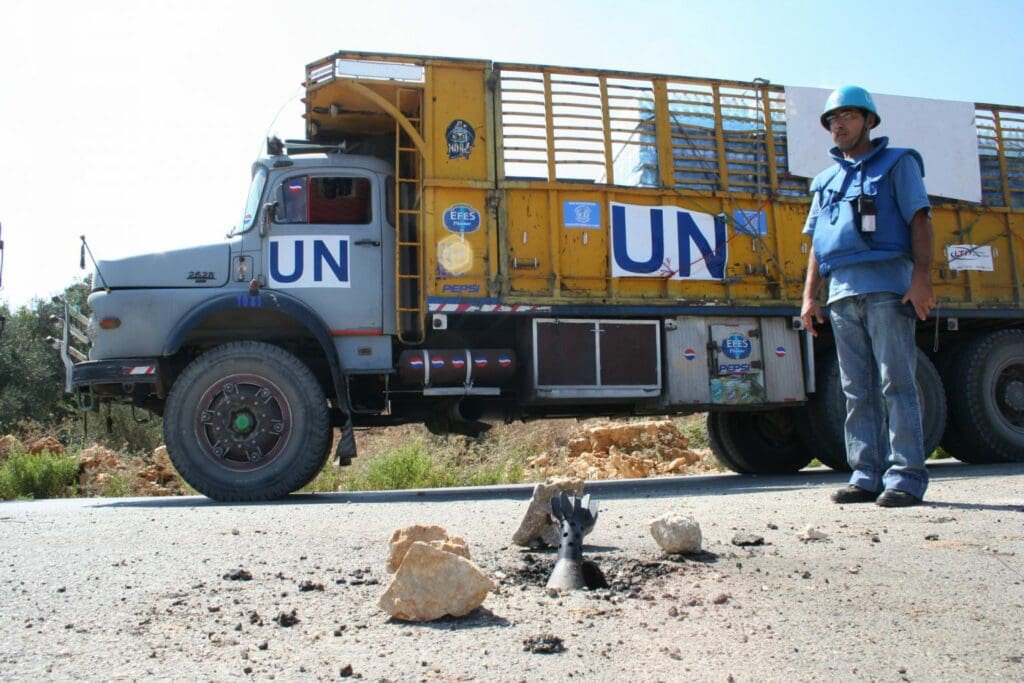
An unexploded mortar bomb is discovered in the middle of a road in southern Lebanon as a WFP convoy transports more than 100 tons of humanitarian supplies.
As the lead agency for the U.N.’s logistics cluster, WFP is responsible for delivering food, supplies and aid workers across the planet’s toughest and most dangerous terrain. But traveling in conflict areas means putting the lives of WFP staffers in peril. Attacks on humanitarian convoys, airstrikes, road blockades—these are among the obstacles that put staffers at risk and prevent the agency from reaching hungry families.
That’s why WFP is turning to “self-driving” vehicles as a possible solution for reaching communities in inaccessible areas. The agency recently joined forces with the German Aerospace Center—a global leader in mobility research and space technology—to develop a blueprint for remotely piloted and self-driving technology for emergency response. WFP also hopes to utilize lessons learned from the private sector as companies continue to test and refine this technology. Uber Freight, for example, is using self-driving trucks to deliver beverages across the U.S. without human input. Volvo, meanwhile, is testing the technology to enhance transportation in the mining sector.
6. Electronic Food Vouchers in Bangladesh
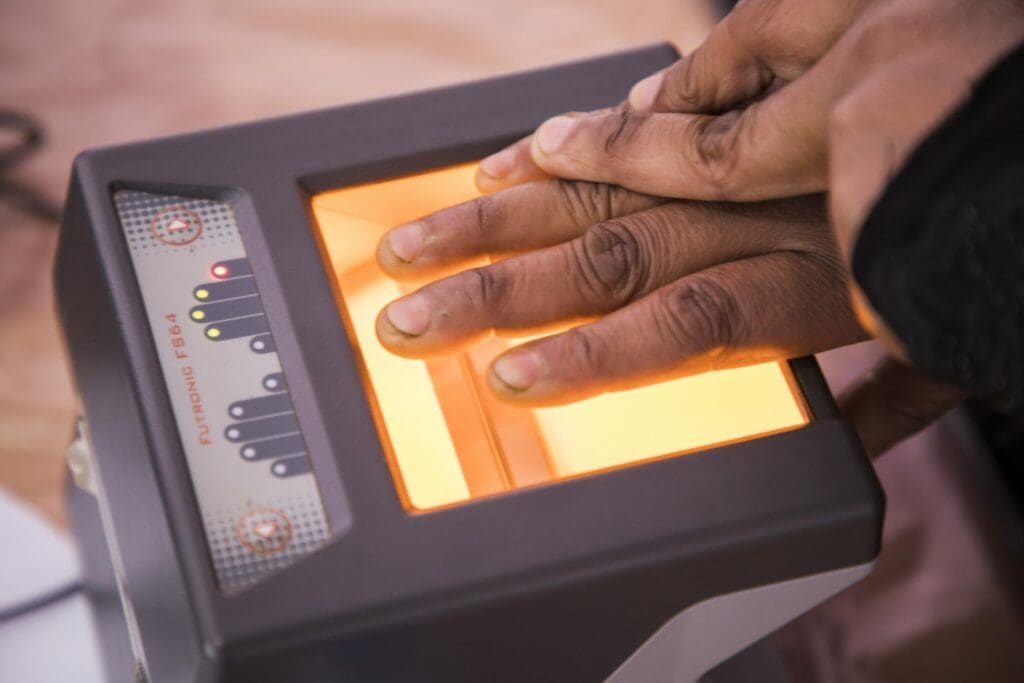
In Bangladesh, WFP is scaling up its electronic food vouchers program so Rohingya refugees can purchase locally produced food. The agency is registering refugees for these “e-cards” using fingerprints recorded on its SCOPE biometric identification system.
When it comes to feeding hungry people, WFP tailors its food assistance to meet the specific conditions and nutritional needs of the communities it serves. And in places where food is available but unaffordable for the most vulnerable, the right kind of food assistance isn’t actually food — it’s electronic food vouchers, or “e-cards.”
Similar to debit cards, these e-cards can be used to purchase fresh dairy, produce and meat from participating markets. This approach not only saves time and money on shipping, storage and distribution, it also supports local economies, expands dietary diversity and restores dignity and choice for families. In Bangladesh, WFP is currently scaling up its e-card program to reach more than half a million Rohingya refugees living in exile. The agency is also utilizing its SCOPE biometric platform, which registers families using fingerprints to reduce loss and theft and helps the agency better monitor and evaluate food distributions.
7. Preventing Food Waste in Kenya
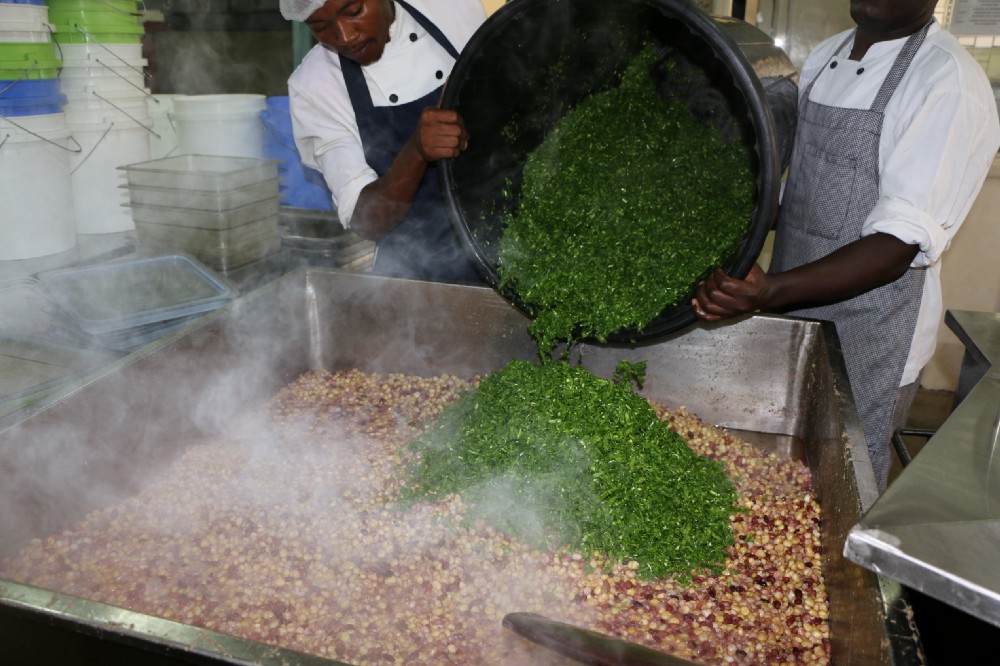
Cooks at the Little Bells Primary School in Kenya prepare a nourishing meal for the students using locally grown green beans that had been rejected for export for cosmetic reasons.
Nearly one-fourth of all produce grown for export in Kenya is rejected for being “too ugly” to sell. That’s the equivalent of tossing 600,000 tomatoes into a landfill every day for purely cosmetic reasons. “These are vegetables that are either oddly shaped, longer or shorter than the desired size for packaging, or simply blemished, but perfectly nutritious and fit for consumption,” Dina Aburmishan, a WFP nutritionist in Kenya, explains.
So last year WFP launched a pilot project in Nairobi—dubbed “Transformers”—that seeks to capture edible food destined for landfill and transform it into nutritious school meals for children in Kenya. This innovative supply chain solution nourishes hungry kids, saves money and reduces the environmental impact of food waste. The initial project, which rescued more than five tons of produce from being thrown away, fed roughly 2,200 children for 75 days.
8. Nutrition Education Games in Colombia
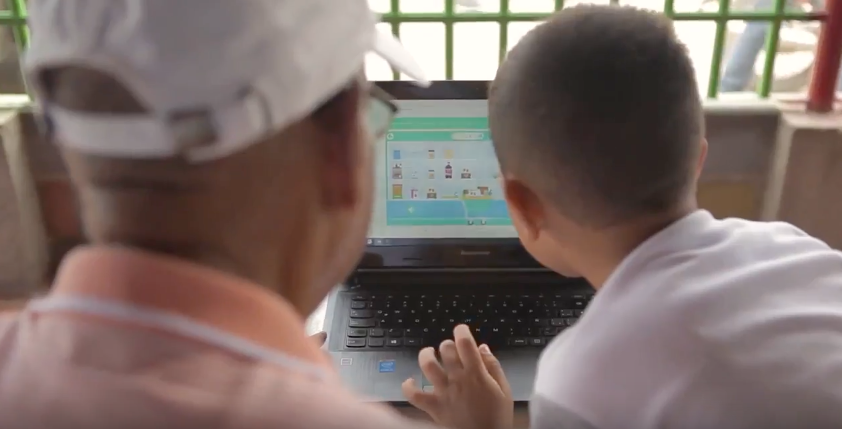
A grandfather and grandson in Colombia explore WFP’s nutrition education app called “Nutrifami,” which is available for free on smartphones and in the country’s Internet cafes.
Understanding the importance of good nutrition—eating a diverse diet, consuming the right vitamins and minerals at the right time, establishing healthy eating habits—plays a vital role in reducing the prevalence of hunger. As part of its mission, WFP works in communities across the globe to provide better nutritional education, including information on sanitation, hygiene and food preparation.
Thanks to a free new app called “NutriFami,” WFP is scaling up these efforts in rural Colombia, where access to nutrition education and healthy foods is limited. The free interactive platform is designed to boost awareness and understanding through learning activities and games made available through a network of government-run Internet cafes.
Families can also use the app to track purchases made with food vouchers provided by WFP. By promoting smart purchasing choices, the app seeks to encourage its users to integrate more fruits, vegetables and dairy products into their diets. Using data collected through the app, WFP can also better assist the households it serves and plan future food assistance.
9. Blockchain Technology in Jordan
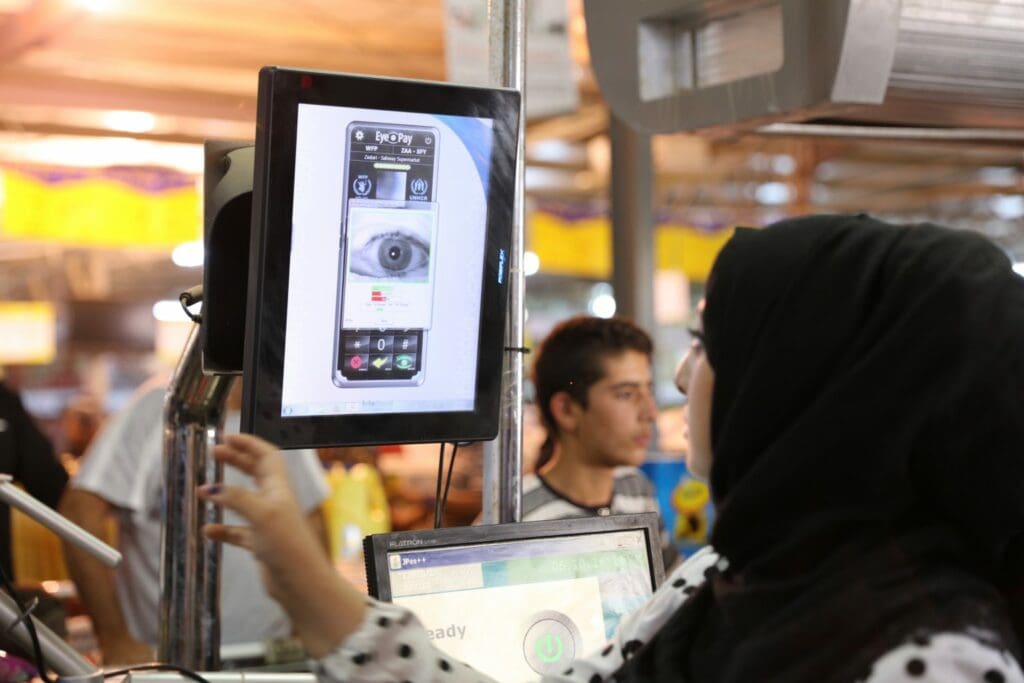
A Syrian woman in Jordan’s Azraq refugee camp uses iris scan technology to access her WFP electronic food voucher, which acts like a debit card to purchase fresh groceries. In the Azraq camp, WFP is recording these transactions using a decentralized, blockchain-based system.
Last January, WFP carried out its first successful field test of Building Blocks, a new approach to delivering food assistance that utilizes the cutting-edge technology known as “blockchain.” Blockchain is a way of organizing data using private key cryptography and decentralized distribution, which could speed up transactions while lowering the chance of fraud or data mismanagement. Crucially, this technology’s peer-to-peer nature removes the need for costly intermediaries, like banks or other institutions.
WFP is currently piloting a larger, more robust version of the blockchain system in Jordan’s Azraq refugee camp, where more than 10,000 Syrian refugees are redeeming their WFP-provided food assistance using the blockchain-based system. As a result, WFP now has a full, in-house record of every transaction that occurs at a particular retailer in the camp, ensuring greater security and privacy for refugees as sensitive data no longer has to be shared with third parties such as phone companies. The agency is also incorporating existing biometric authentication technology known IrisGuard, which allows refugees to identify themselves with the blink of an eye.
10. Hydroponic Food Computers in Jordan
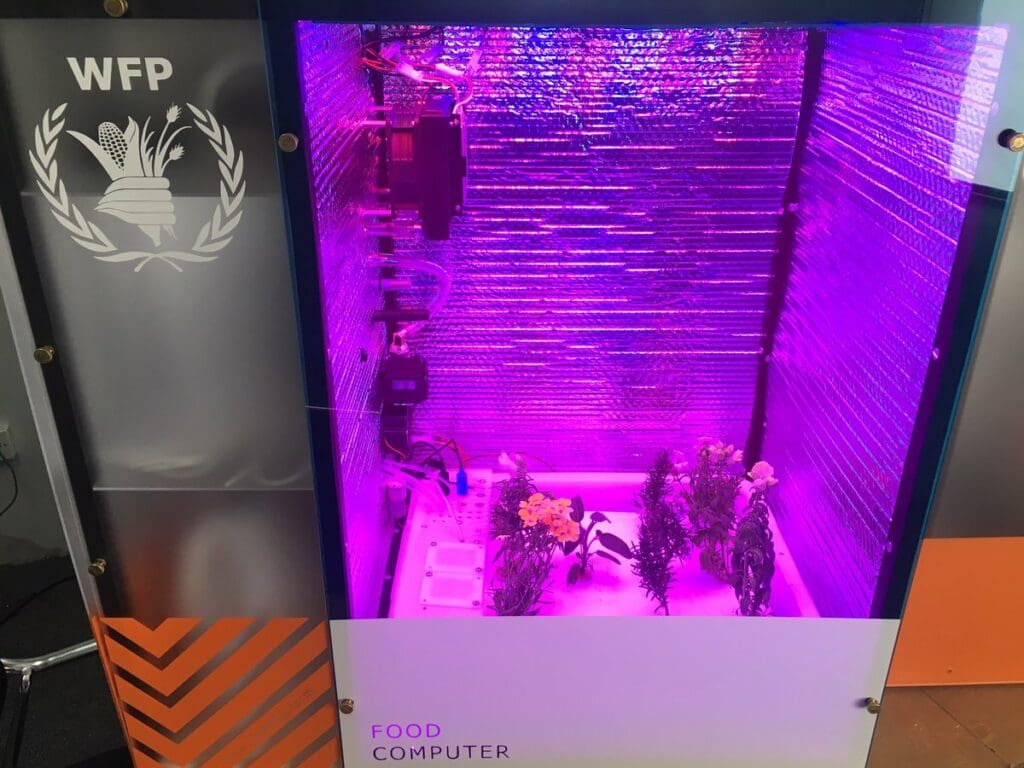
WFP’s “food computers” utilize hydroponic technology to help Syrian refugees in Jordan grow their own produce in small, soilless growing chambers.
WFP’s “food computers” utilize hydroponic technology to help Syrian refugees in Jordan grow their own produce in small, soilless growing chambers.In a remote desert of Jordan, Syrian families are growing their own produce in miniature, digital, personal greenhouses known as “Food Computers.” Created in partnership with MIT, this agriculture technology uses robotic systems to control and monitor the climate, energy levels, and plant growth inside each growing chamber. Families can adjust the levels of carbon dioxide, humidity, oxygen, hydrogen and temperature to create the perfect growing conditions needed to harvest fresh and nutrient-dense food.
This approach is especially useful in Jordan, where just 10 percent of the land is suitable for cultivation. Hydroponics—soilless agriculture—is far more efficient than traditional agriculture, using 70 percent less water and a quarter of the space, Nina Schröder of WFP’s Innovation Accelerator told the Jordan Times last year. The Syrian refugees participating in WFP’s pilot project are learning about specific sets of growing conditions for certain vegetables and fruits—described by WFP as “climate recipes”—that yield unique results. Plants grown under different conditions may vary in color, size, texture, yield and nutrient density. WFP’s “Food Computers” can even mimic weather factors like induced drought, which in some plants—like beets, onions and garlic—can help intensify flavor.




